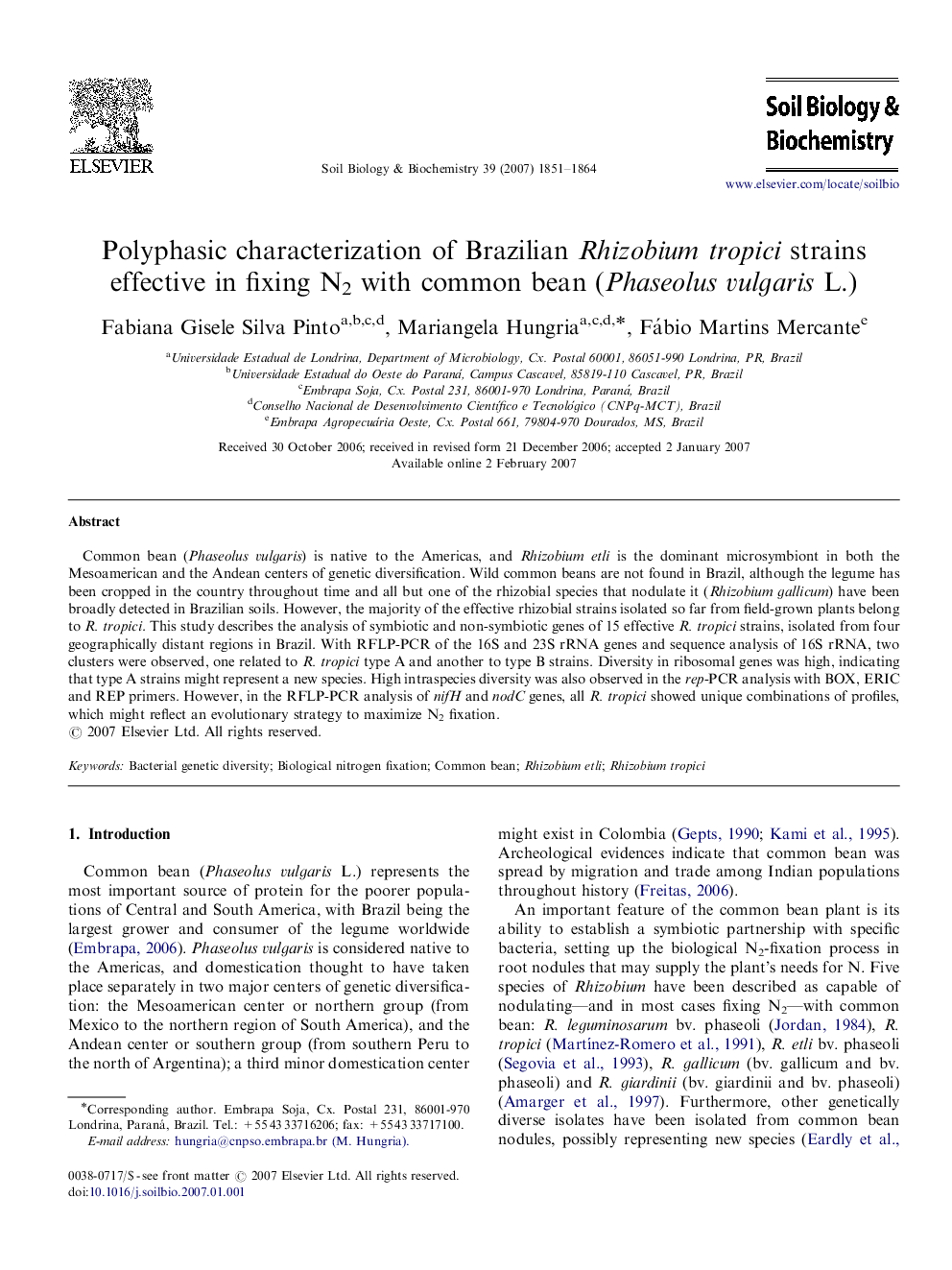| Article ID | Journal | Published Year | Pages | File Type |
|---|---|---|---|---|
| 2026050 | Soil Biology and Biochemistry | 2007 | 14 Pages |
Abstract
Common bean (Phaseolus vulgaris) is native to the Americas, and Rhizobium etli is the dominant microsymbiont in both the Mesoamerican and the Andean centers of genetic diversification. Wild common beans are not found in Brazil, although the legume has been cropped in the country throughout time and all but one of the rhizobial species that nodulate it (Rhizobium gallicum) have been broadly detected in Brazilian soils. However, the majority of the effective rhizobial strains isolated so far from field-grown plants belong to R. tropici. This study describes the analysis of symbiotic and non-symbiotic genes of 15 effective R. tropici strains, isolated from four geographically distant regions in Brazil. With RFLP-PCR of the 16S and 23S rRNA genes and sequence analysis of 16S rRNA, two clusters were observed, one related to R. tropici type A and another to type B strains. Diversity in ribosomal genes was high, indicating that type A strains might represent a new species. High intraspecies diversity was also observed in the rep-PCR analysis with BOX, ERIC and REP primers. However, in the RFLP-PCR analysis of nifH and nodC genes, all R. tropici showed unique combinations of profiles, which might reflect an evolutionary strategy to maximize N2 fixation.
Related Topics
Life Sciences
Agricultural and Biological Sciences
Soil Science
Authors
Fabiana Gisele Silva Pinto, Mariangela Hungria, Fábio Martins Mercante,
